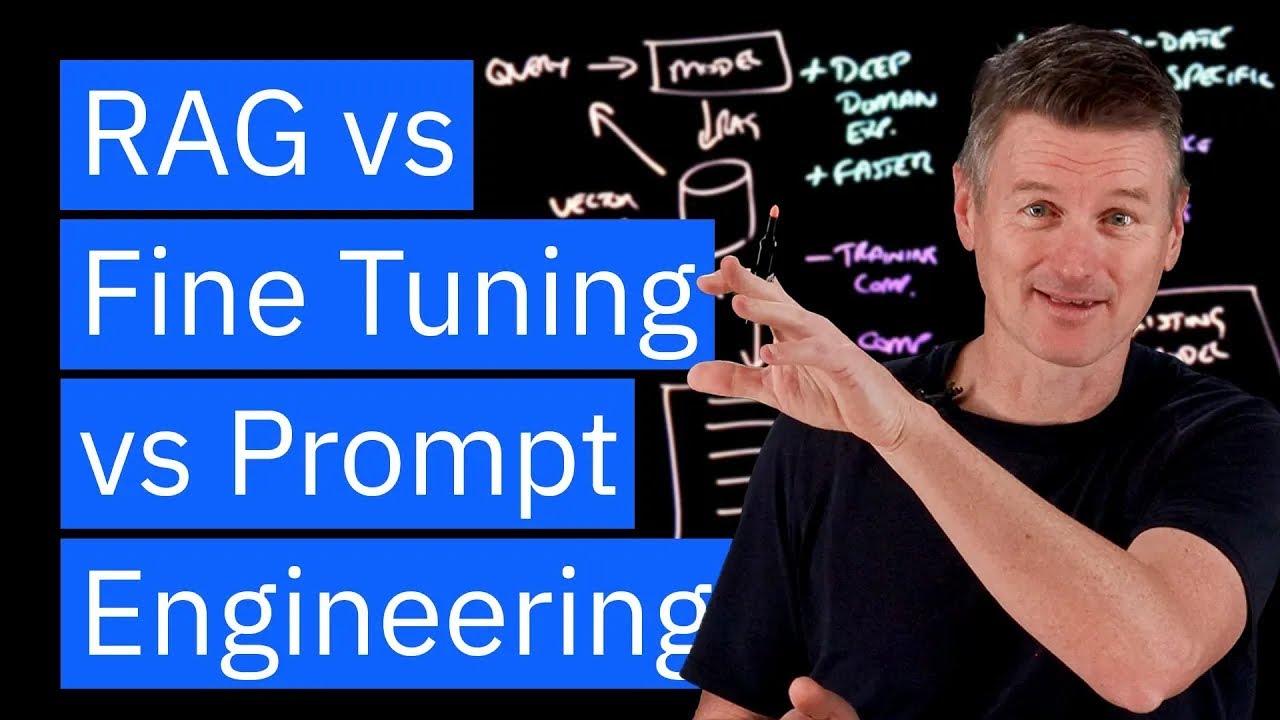The video explores three methods for optimizing AI model responses: Retrieval Augmented Generation (RAG), fine-tuning, and prompt engineering, each with its own advantages and challenges. It emphasizes that these methods can be effectively combined to enhance AI systems based on specific needs and resources.
The video discusses three methods for optimizing AI model responses: Retrieval Augmented Generation (RAG), fine-tuning, and prompt engineering. It begins by illustrating how different large language models (LLMs) can provide varying information about a person, such as Martin Keen, based on their training data and knowledge cutoffs. To improve the accuracy of the responses, the video introduces RAG, fine-tuning, and prompt engineering as effective strategies.
RAG involves a three-step process: retrieval, augmentation, and generation. First, the model retrieves up-to-date information from a corpus of documents, converting both the query and the documents into vector embeddings to find semantically similar content. This allows the model to generate responses that incorporate current and relevant data, enhancing the accuracy of its answers. However, RAG comes with performance costs, including increased latency and the need for additional infrastructure to manage the vector embeddings.
Fine-tuning, on the other hand, focuses on training an existing model on a specialized dataset to enhance its expertise in a specific domain. This process adjusts the model’s internal parameters through supervised learning, allowing it to recognize domain-specific patterns. While fine-tuning can lead to faster inference times and deeper expertise, it requires substantial computational resources, high-quality training examples, and poses risks such as catastrophic forgetting, where the model loses general knowledge while learning specialized information.
Prompt engineering is the third method discussed, which involves crafting specific queries to guide the model’s attention and improve its output. By providing detailed prompts, users can activate the model’s existing capabilities without needing additional training or data retrieval. While this method offers immediate results and does not require backend changes, it relies on trial and error and is limited to the model’s pre-existing knowledge.
The video concludes by emphasizing that these three methods—RAG, fine-tuning, and prompt engineering—can be used in combination to optimize AI systems effectively. For instance, a legal AI system could utilize RAG for retrieving recent cases, prompt engineering for formatting legal documents, and fine-tuning for mastering firm-specific policies. Ultimately, the choice of method depends on the specific needs and resources available, highlighting the evolution of AI from simple searches to complex, optimized interactions.
